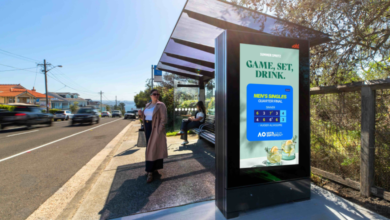How Sans Font Shape the Way We Read Online

Typography plays a more pivotal role than ever before. With screens everywhere, phones, tablets, laptops, TVs—the fonts we use must ensure readability, clarity, and usability. Among various font styles, sans serif (or “sans” fonts)—fonts without the serifs or small strokes at the ends of letters—have risen to dominance. They influence not just what we read, but how we read. Below, we explore how a sans font moulds the reading experience online, drawing on specifics from TypeType’s collection of sans serif fonts.
What Makes Sans Fonts Ideal for Digital Reading
Sans fonts are praised for being neutral, sleek, and modern. According to TypeType, these qualities make them versatile—they work well in branding, mobile apps, websites, print, and more. TypeType: Because sans fonts lack the little decorative strokes (serifs), they tend to appear cleaner on screen, especially at smaller sizes or lower resolutions. They reduce visual clutter, allowing letters and words to stand out more clearly.
Another factor is versatility. TypeType describes geometric sans serifs (such as TT Norms® Pro and TT Commons™ Pro) as “functional and versatile workhorses. These are fonts that perform well in both headings and body text, in varied sizes, and across different mediums. That consistency makes them trusted tools for designers aiming for uniform readability.
Styles Within Sans Serif and Their Effects on Reading
TypeType divides sans fonts into several sub-styles: Geometric, Neo-Grotesque, Humanist, and Old Style.
See also: Simplifying Floor Cleaning: Tools, Techniques, and Technology
Specific Examples from TypeType: Bestsellers & Updates
TypeType’s own data confirms which sans fonts are most adopted, hinting at what users and designers prefer. Their bestsellers include TT Norms® Pro, TT Commons™ Pro, TT Hoves Pro, TT Firs Neue, and TT Fors. These fonts often offer many styles. For example, TT Norms Pro and TT Commons Pro each have 104 font styles in their family. Large families with many weights/styles allow designers to adjust size, weight, and style for optimal readability in different contexts (headlines vs body text vs UI labels).
Another piece of data: In one of the recent updates, TypeType increased supported languages from 200 to 270. Also, the glyph count per style in TT Norms (in its Compact, Normal, Condensed, and Expanded subfamilies) increased from 1,573 to 1,716, with additions like currency symbols (Uzbekistani Sum, Kyrgyz Som, etc.).TypeType® This matters because reading online is global—users expect clarity not only in Latin alphabets but in multilingual content. Sans fonts that support many languages and glyphs ensure consistent user experience across different readers.
How These Characteristics Shape Online Reading
Putting it all together, sans fonts shape online reading in these key ways:
Clarity & legibility: Clean lines and lack of ornamentation help letters distinguish themselves, especially at small sizes or on less-perfect screens.
Consistency across devices: With multiple font styles in a family (light, regular, bold, italic, condensed, etc.), designers can match weight/size appropriate for desktop, mobile, or display, preserving consistency.
Faster scanning: Sans serif fonts help users scan text quickly—for example in navigation menus, headlines, UI elements—because shapes are simpler, less distracting.
Global usability: Fonts with broad glyph sets and language support ensure that people reading in different languages have equal reading quality.
Modern aesthetic & brand perception: Since sans fonts are associated with modernity, simplicity, and neutrality, using them gives a site or an app a contemporary, clean look; this affects user perception, trust, and likely engagement.
Conclusion
Sans serif fonts are more than just aesthetic choices: they profoundly influence readability, comprehension, and user experience online. From the styles (geometric, humanist, neo-grotesque, etc.) to features like language support and variety of weights, the specifics matter. The data from TypeType shows a steady trend: fonts that are clean, versatile, multilingual, and with many styles are winning out. In designing for the web, choosing the right sans font can make the difference between content that’s tiring to read and content that flows effortlessly.



